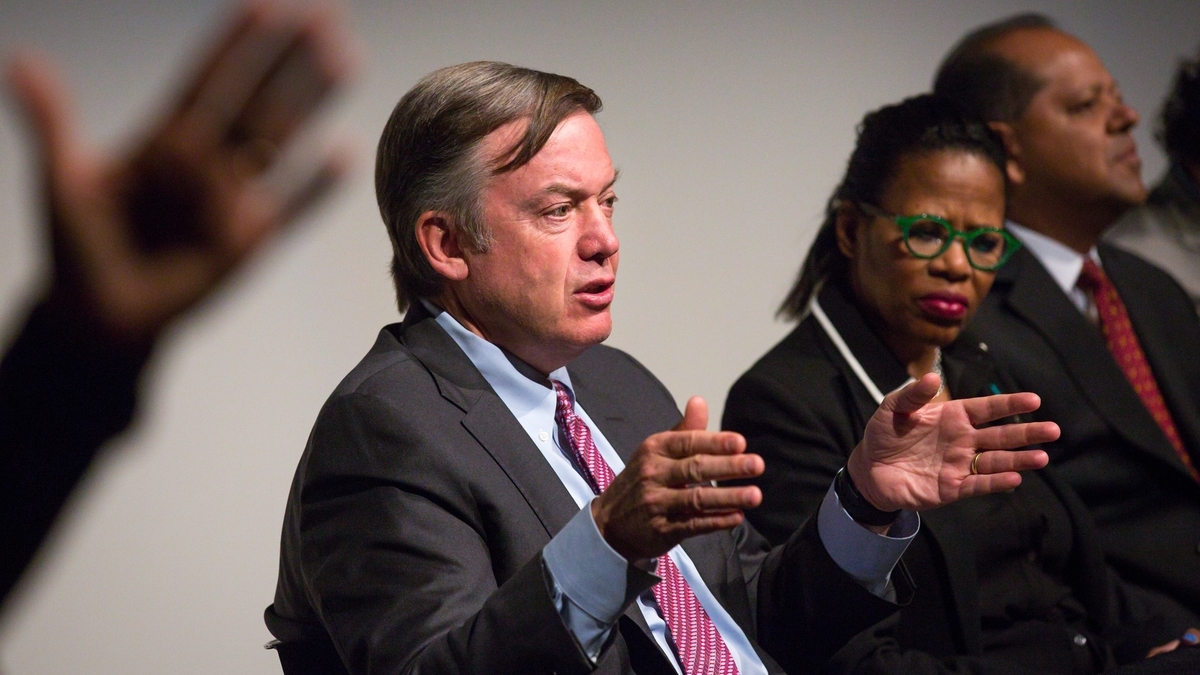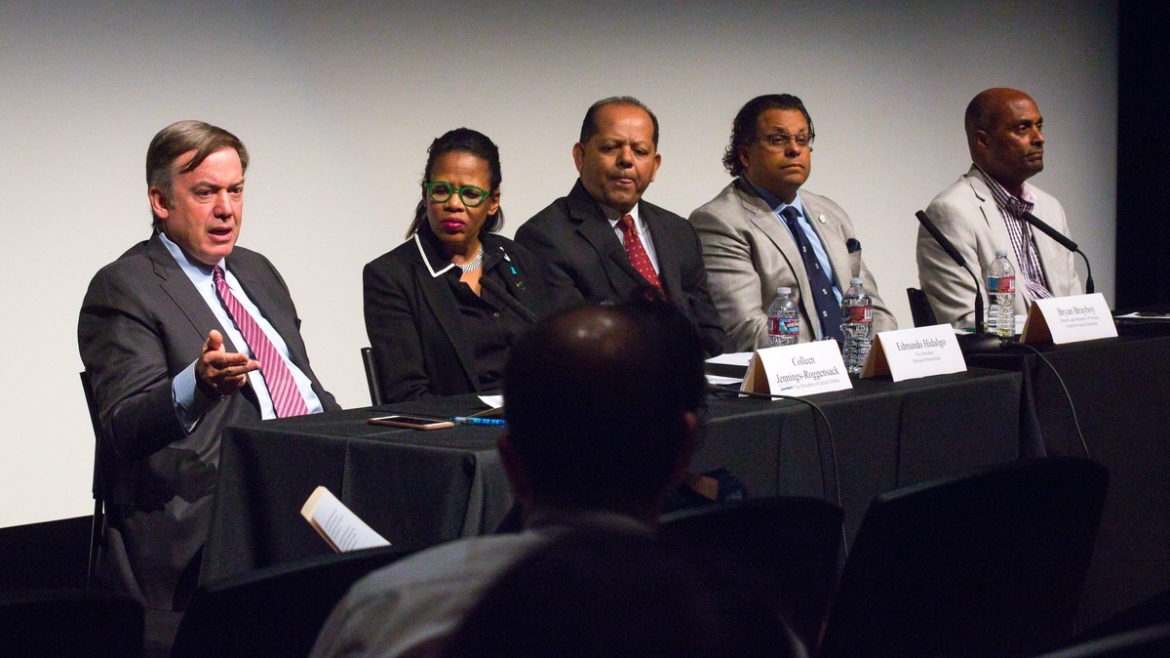Affirming inclusion as the ASU way

Arizona State University is working to defeat the deep-rooted idea that higher education is an exclusive enterprise, a privilege set for only a segment of the population.
And the university is working to empower the current generation of students to carry out that mission, according to ASU President Michael Crow.
“Our entire education system is built around the notion of exclusivity, scarcity, hierarchy and social status,” Crow said during a panel discussion titled “Creating Success by Whom We Include,” sponsored by the Faculty Women of Color Caucus at the Marston Exploration Theater on Thursday, Feb. 18.
“If you want inclusion to work, you must defeat that.”
Crow cited ASU’s Starbucks Initiative and the Global Freshmen Academy as two programs that have greatly expanded access to university credit.
He also said that for current students — whom he described as “late Millennials” — easy access to technology has made their world more egalitarian.
“Our students have unbelievably high expectations for the environment when they come to the university,” he said. “They assume it will be inclusive. They believe our society should be inclusive.”

ASU President Michael Crow (left) joins panelists Colleen Jennings-Roggensack, Edmundo Hidalgo, Bryan Brayboy and Ray Anderson at a Diversity Dialogue on Feb. 18. Photos by Charlie Leight/ASU Now
The panelists said that ASU’s work toward becoming more inclusive of all types of people is ongoing.
Crow noted that in 1991, only 3 percent of ASU’s students came from families eligible to receive the federal Pell Grant financial aid. In 2002, it was about 10 percent, and now it’s about 40 percent.
He said that ASU’s approach has been to alter its culture, which is not easy.
“Would you be rejected by this institution as a leader or faculty member if you didn’t believe in this inclusion? The answer now is yes,” he said.
Colleen Jennings-Roggensack, executive director for ASU Gammage and associate vice president of cultural affairs, said she prefers the term “inclusion” to “diversity.”
“Diversity means ‘not me,’ while ‘inclusion’ means everyone,” she said.
At Gammage, the staff has collaborated with communities in Arizona to express their cultures.
“We worked with the Latino community, and they wanted a chance to share their culture defined from the beginning of time to today, and reflective of class structure,” she said. “There are 14 Asian communities, and we’ve worked with 29 First Nation communities.”
“We need to recognize that students come to us with millennia worth of knowledge. What we do is help them to envision and enact their own futures.”
— Bryan Brayboy, special adviser to President Crow on Indian initiatives
Ray Anderson, vice president for university athletics, said that his background in the private sector — including the National Football League — proved that inclusion is simply good business.
And that concept translates from the business world to ASU.
“We are trying to recruit and sell young men and women and their parents on what we are here,” Anderson said. “There is a higher comfort level when they know there are folks who look like them. We have women and we have brown-skinned folks.”
Edmundo Hildago, vice president for outreach partnerships for ASU, said the university must be willing to have difficult conversations about inclusion.
"We have to bring those conversations forward and not pass the buck when the opportunities present themselves," he said.
Bryan Brayboy, special adviser to Crow on Indian initiatives, noted that ASU is built on the ancestral lands of Native Americans.
“We need to recognize that students come to us with millennia worth of knowledge. What we do is help them to envision and enact their own futures,” he said.
He echoed Crow’s frequent theme of ASU preparing people to be lifelong “master learners.”
“It’s important that we take it a step further. We’re preparing master learners to become master doers.”

